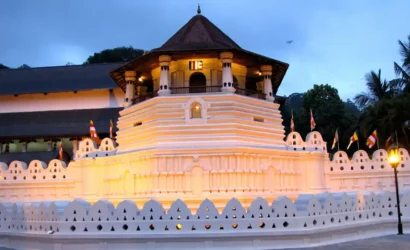Neduntheevu, commonly known as Delft Island, is a serene destination located off the northern coast of Sri Lanka. It is renowned for its stunning natural beauty, featuring pristine beaches and unique wildlife. Visitors can explore historic sites like the Dutch Fort and St. Mary’s Church, which reflect the island’s colonial past. The famous wild ponies add to the island’s charm, roaming freely across the landscape. With opportunities for snorkeling and relaxation, Delft Island offers a peaceful escape for nature lovers and history enthusiasts alike.
Nature Beauty
Neduntheevu, is a serene escape surrounded by the sparkling waters of the Indian Ocean. Its untouched beaches, lined with coral fragments and crystal-clear waters, offer a peaceful retreat for nature lovers. The island’s open landscapes, dotted with wild ponies grazing freely, provide a rare sight that enhances the natural charm. The towering Baobab tree, an ancient wonder, stands out in the island’s otherwise flat terrain, adding a mystical element to the landscape. Delft Island’s unspoiled beauty and unique wildlife make it a true hidden gem in Sri Lanka.
Cultural Significance
Neduntheevu, or Delft Island, holds a rich cultural history shaped by its colonial past. The Dutch Fort, constructed from coral stones, reflects the island’s Dutch and Portuguese influences. The St. Mary’s Church, one of the island’s oldest Catholic churches, showcases the lasting religious impact of European colonizers. Locals still practice traditional fishing and weaving methods, preserving their indigenous customs. The presence of wild ponies, said to have been left by the Dutch, adds to the island’s unique heritage. Delft Island’s blend of colonial architecture and local traditions makes it culturally significant in Sri Lanka.
Key Attractions and Activities
Local Culture: Interact with locals to learn about traditional fishing practices and crafts, enriching your understanding of island life.
Dutch Fort: Explore the historic Dutch Fort, built from coral stones, which offers a glimpse into the island’s colonial past.
Baobab Tree: Visit the majestic Baobab Tree, a centuries-old natural wonder, and enjoy the scenic surroundings.
Wild Ponies: Observe the famous wild ponies roaming freely across the island, adding to its unique charm.
Coral Stone Walls: Wander along the ancient coral stone walls, showcasing the traditional building techniques of the local people.
St. Mary’s Church: Discover St. Mary’s Church, an important historical site reflecting the island’s religious heritage.
Beaches: Relax on the pristine beaches, where you can soak up the sun, swim in clear waters, and enjoy tranquil views.
Snorkeling and Swimming: Engage in snorkeling or swimming to explore the underwater beauty and marine life surrounding the island.
Delft Island offers a unique blend of history, nature, and culture, making it a must-visit destination in Sri Lanka. From exploring ancient colonial ruins to observing wild ponies and relaxing on untouched beaches, the island provides a peaceful escape from the mainland. Its rich history, combined with natural beauty, makes Delft Island an unforgettable experience for any traveler seeking something off the beaten path. Whether for a day trip or a longer stay, Delft Island is a treasure waiting to be discovered.
Highlights of Delft Island
- Wild Ponies: See the famous wild ponies that roam freely across the island, a unique remnant of Dutch colonial times.
- Dutch Fort: Explore the ancient Dutch Fort, built with coral and limestone, showcasing Delft’s colonial heritage.
- Baobab Tree: Visit the iconic Baobab Tree, believed to be over 700 years old, adding to the island's historical charm.
- Coral Stone Walls: Admire the coral stone walls, intricately built by locals, adding a distinct touch to the landscape.
- Pristine Beaches: Relax on the island’s untouched beaches, offering stunning views and peaceful surroundings.
- Queen's Tower: Discover the old lighthouse structure, known as Queen’s Tower, for panoramic island views.
- St. Mary's Church: Visit one of the oldest Catholic churches on the island, reflecting the blend of local and colonial influences.







